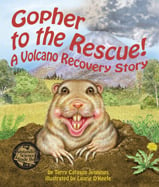Alignment to Standards for NY

| Grade | Number | Standard |
|---|---|---|
| K,1,2,3,4 | K-4..3.1a (iv) | claws, shells, spines, feathers, fur, scales, and color of body covering enable some animals to protect themselves from predators and other environmental conditions, or enable them to obtain food |
| K,1,2,3,4 | K-4..3.2a | Individuals within a species may compete with each other for food, mates, space, water, and shelter in their environment. |
| K,1,2,3,4 | K-4.1.1a | Animals need air, water, and food in order to live and thrive. |
| K,1,2,3,4 | K-4.2.1d | Erosion and deposition result from the interaction among air, water, and land. |
| K,1,2,3,4 | K-4.2.1d (ii) | pieces of earth material may be moved by air, water, wind, and gravity |
| K,1,2,3,4 | K-4.2.1d (iii) | pieces of earth material will settle or deposit on land or in the water in different places |
| K,1,2,3,4 | K-4.2.1e | Extreme natural events (floods, fires, earthquakes,volcanic eruptions, hurricanes, tornadoes, and other severe storms) may have positive or negative impacts on living things |
| K,1,2,3,4 | K-4.3.1a | Each animal has different structures that serve different functions in growth, survival, and reproduction. |
| K,1,2,3,4 | K-4.3.1a (i) | wings, legs, or fins enable some animals to seek shelter and escape predators |
| K,1,2,3,4 | K-4.3.1a (ii) | the mouth, including teeth, jaws, and tongue, enables some animals to eat and drink |
| K,1,2,3,4 | K-4.3.1a (iii) | eyes, nose, ears, tongue, and skin of some animals enable the animals to sense their surroundings |
| K,1,2,3,4 | K-4.3.1b (i) | roots help support the plant and take in water and nutrients |
| K,1,2,3,4 | K-4.3.1b (vi) | seeds contain stored food that aids in germination and the growth of young plants |
| K,1,2,3,4 | K-4.3.1c | In order to survive in their environment, plants and animals must be adapted to that environment. |
| K,1,2,3,4 | K-4.3.1c (i) | seeds disperse by a plantês own mechanism and/or in a variety of ways that can include wind, water, and animals |
| K,1,2,3,4 | K-4.3.1c (iii) | animal adaptations include coloration for warning or attraction, camouflage, defense mechanisms, movement, hibernation, and migration |
| K,1,2,3,4 | K-4.3.2c | Changes in the properties or materials of objects can be observed and described. |
| K,1,2,3,4 | K-4.4.2b | Food supplies the energy and materials necessary for growth and repair. |
| K,1,2,3,4 | K-4.5.1a | All living things grow, take in nutrients, breathe, reproduce, and eliminate waste. |
| K,1,2,3,4 | K-4.5.1b | An organismês external physical features can enable it to carry out life functions in its particular environment. |
| K,1,2,3,4 | K-4.5.2a | Plants respond to changes in their environment. the leaves of some green plants change position as the direction of light changes; the parts of some plants, undergo seasonal changes that enable the plant to grow; seeds germinate, and leaves, |
| K,1,2,3,4 | K-4.5.2b | Animals respond to change in their environment, (e.g., perspiration, heart rate, breathing rate, eye blinking, shivering, and salivating). |
| K,1,2,3,4 | K-4.5.2d | Some animals, including humans, move from place to place to meet their needs. |
| K,1,2,3,4 | K-4.5.2f | Some animal behaviors are influenced by environmental conditions:nest building, hibernating, hunting, migrating, and communicating. |
| K,1,2,3,4 | K-4.6.1b | All animals depend on plants. Some animals (predators) eat other animals (prey). |
| K,1,2,3,4 | K-4.6.1e | An organismês pattern of behavior is related to the nature of that organismês environment, including the kinds and numbers of other organisms present, the availability of food and other resources, and the physical characteristics of the environment. |
| K,1,2,3,4 | K-4.6.1f | When the environment changes, some plants and animals survive and reproduce, and others die or move to new locations. |
| K,1,2,3,4 | K-4.6.2b | The Sunês energy is transferred on Earth from plants to animals through the food chain. |